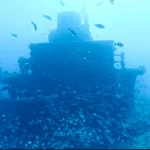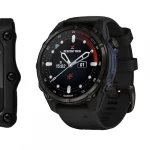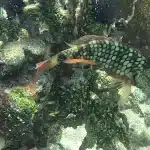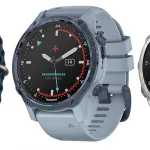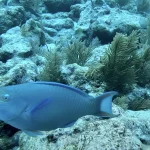Table of Contents
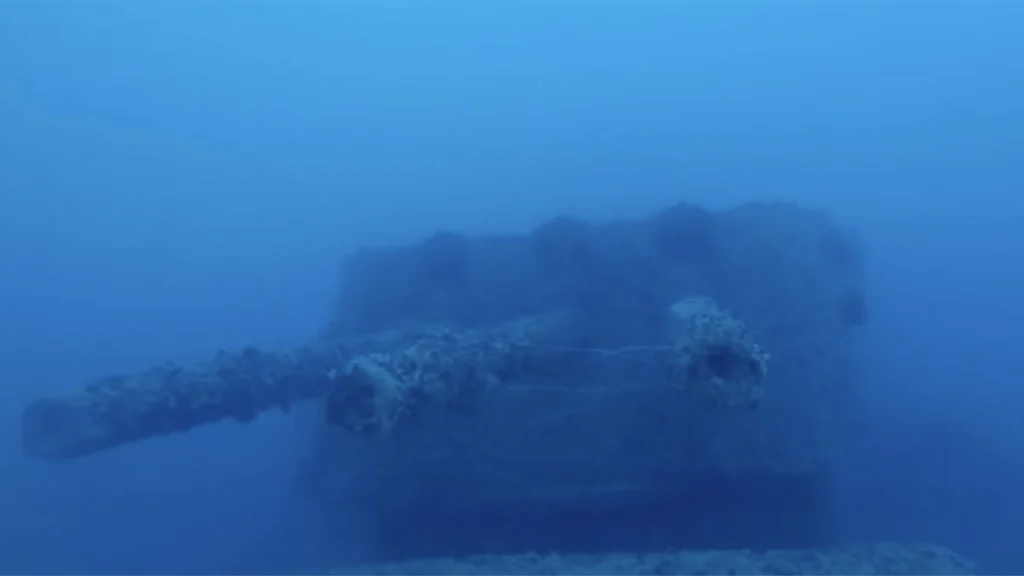
Divers describe the USS Wilkes-Barre as a massive, fascinating wreck with abundant marine life and historical artifacts. However, they consistently emphasize the technical difficulty and potential dangers of this deep dive, recommending it only for those with appropriate training and experience.
Article at a Glance
- Historical Significance: The USS Wilkes-Barre was a Cleveland-class light cruiser that served in World War II, participating in major battles such as Iwo Jima and Okinawa, earning four battle stars.
- Wreck Location: The shipwreck is located about 13.5 miles southwest of Summerland Key, Florida, with coordinates approximately 24° 28′ 28″ N and 81° 32′ 60″ W.
- Depth and Structure: The wreck lies at depths ranging from 140 to 320 feet (43 to 98 meters) and is split into two sections: the upright stern and the tilted bow.
- Unique Features: Divers can explore various historical features, including gun turrets, radar monitors, and intact portholes, providing a glimpse into the ship’s military history.
- Marine Life: The wreck has developed into an artificial reef, attracting diverse marine life such as sharks, snapper, barracuda, and occasionally larger species like sperm whales and manta rays.
- Diving Challenges: The dive is considered one of the most challenging in Florida, requiring advanced technical diving skills, including decompression diving and mixed gas systems.
- Safety Measures: Divers must prioritize safety by ensuring proper certification, using specialized equipment, planning dives meticulously, and ideally diving with experienced guides familiar with the wreck.
Shipwreck Location Coordinates and Depth
Depth
The wreck lies at significant depths:
- The two sections of the ship lie in ocean depths ranging from 140 to 250 feet (43 to 76 meters)
- The wreck sits upright on the ocean floor at a maximum depth of 320 feet (98 meters)
- The upper deck rests at about 210 feet (64 meters)
- The highest point of the wreck is at 140 feet (43 meters)
Location Coordinates
The precise coordinates are:
Some sources list slightly different coordinates for the bow section:
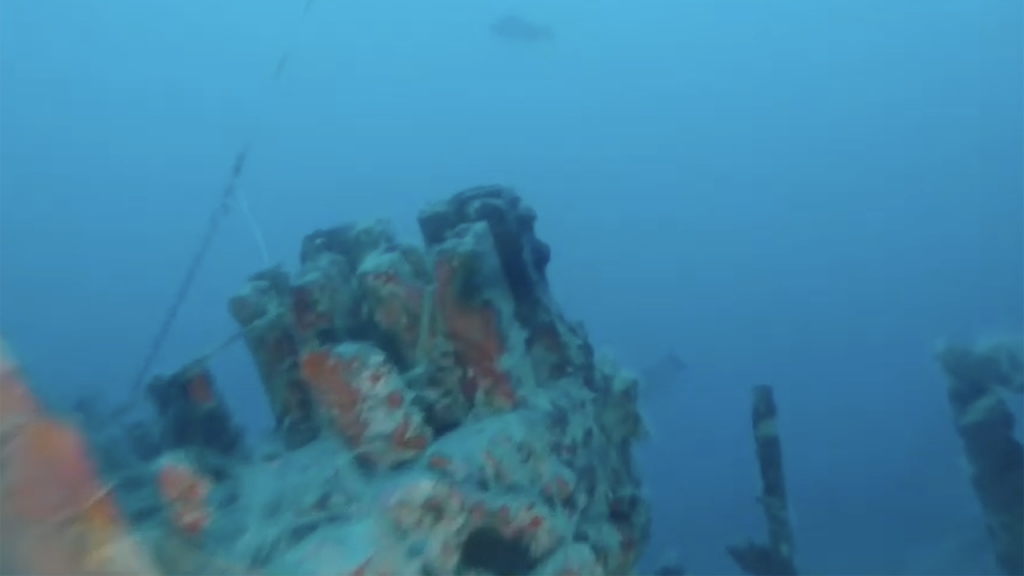
What Do Scuba Divers Say About This Ship
Diving Conditions
- The wreck is considered one of the most remarkable deep dives in the Florida Keys.
- It’s known as a challenging and potentially dangerous dive, nicknamed “the Lethal Lady”.
- Only highly skilled and experienced technical divers should attempt this dive due to its extreme depth.
Wreck Features
- The ship is split into two sections, creating two separate dive sites.
- The stern section rests upright, while the bow lies on its starboard side.
- Divers can explore various parts of the ship, including:
Marine Life
Divers report encountering a diverse array of marine life around the wreck, including:
Technical Details
- The wreck lies at depths ranging from 140 to 250 feet (43 to 76 meters).
- The highest point of the wreck is at 140 feet (43 meters).
- Divers may encounter strong currents.
- The ship’s superstructure can be reached at about 145 feet (44 meters).
What Kind of Marine Life Can Be Found on The Ship
Common Species
- Sharks (various species)
- Snapper
- Barracuda
- Grouper
- Amberjack
- Mahi mahi
Large Marine Life
- Sperm whales (occasional sightings)
- Manta rays
- Sailfish
Other Fish
While not specifically mentioned, shipwrecks in deep water often attract:
- Schools of smaller reef fish
- Pelagic species passing through the area
Unique Characteristics
- Due to the extreme depth, divers may encounter fish that are less accustomed to human presence and potentially more curious or sociable than those in shallower waters.
Coral and Invertebrates
Although not explicitly stated in the search results, it’s worth noting that:
- The wreck has likely developed into an artificial reef over time, potentially hosting various coral species and invertebrates typical of deep-water environments in the Florida Keys.
Key Information
| Category | Details |
|---|---|
| Ship Class | Cleveland-class light cruiser |
| Length | 608 feet (185 meters) |
| Commissioned | July 1, 1944 |
| Sinking Date | May 12-13, 1972 (intentional, for weapons testing) |
| Nickname | “The Lethal Lady” |
| Maximum Depth | 320 feet (98 meters) |
| Shallowest Point | 140 feet (43 meters) |
| Wreck Configuration | Two separate sections (bow and stern) |
| Notable Equipment | 6-inch gun turrets, anti-aircraft stations, radar equipment |
| Recommended Dive Level | Advanced Technical (Trimix certification recommended) |
| Typical Visibility | 50-100 feet (15-30 meters), varies with conditions |
| Common Hazards | Strong currents, limited bottom time, potential entanglement |
| Best Diving Season | May to September (calmer seas and better visibility) |
What Makes USS Wilkes-Barre a Unique Diving Experience
Extreme Depth
- The wreck lies at depths ranging from 140 to 250 feet (43 to 76 meters).
- The upper deck rests at about 210 feet (64 meters), with the highest point at 140 feet (43 meters).
- These depths make it one of the deepest dive sites in the Florida Keys.
Technical Challenge
- Due to its extreme depth, it’s only suitable for highly skilled technical divers.
- It’s nicknamed “the Lethal Lady” because of the treacherous nature of the dive.
- Divers may encounter strong currents, adding to the challenge.
Historical Significance
- The USS Wilkes-Barre is a World War II-era Cleveland-class light cruiser.
- It served in significant battles, including Iwo Jima and Okinawa.
- The ship received four battle stars for its role in the war.
Unique Wreck Features
- The ship is split into two sections, creating two separate dive sites.
- The stern section rests upright, while the bow lies on its starboard side.
- Divers can explore various well-preserved areas, including:
Marine Life
- The depth attracts diverse and sometimes unusual marine life, including:
- Fish at these depths may be more curious and sociable due to less human interaction.
Artificial Reef
- The wreck has developed into a significant artificial reef over time.
- This attracts a wide variety of marine life and contributes to the local ecosystem.
How Does The USS Wilkes-Barre Compare to Other Shipwrecks in Florida
Depth and Technical Challenge
- It’s one of the deepest diveable wrecks in Florida, with depths ranging from 140 to 250 feet (43 to 76 meters).
- This extreme depth makes it suitable only for highly skilled technical divers, unlike many shallower wrecks accessible to recreational divers.
Size and Scale
- At 608 feet long, it’s one of the largest shipwrecks in the Florida Keys.
- The ship is split into two massive sections, creating two separate dive sites.
Historical Significance
- As a Cleveland-class light cruiser that served in World War II, it has greater historical value than many other artificial reefs.
- The ship received four battle stars for its wartime service, including actions at Iwo Jima and Okinawa.
Unique Sinking Circumstances
- Unlike many deliberately sunk ships, the Wilkes-Barre was used for underwater explosives testing, resulting in its unusual split configuration.
Marine Life
- Due to its depth, it attracts some larger and more unusual marine species compared to shallower wrecks, including occasional sightings of sperm whales and manta rays.
Preservation State
- Despite the explosive testing, many areas of the ship remain well-preserved, with intact equipment and some portholes still retaining their glass.
Diving Experience
- The combination of depth, currents, and the ship’s massive size makes it one of the most challenging and potentially dangerous dives in Florida, earning it the nickname “the Lethal Lady”.
What is The Full History of This Ship
Construction and Commissioning
- Keel laid on December 14, 1942, at New York Shipbuilding Corporation in Camden, New Jersey
- Launched on December 24, 1943
- Commissioned on July 1, 1944, with hull number CL-103
World War II Service
- Conducted shakedown cruise in Chesapeake Bay and the Atlantic
- Departed for the Pacific on October 23, 1944
- Arrived in Pearl Harbor in November 1944
- Participated in several major operations:
- Screened aircraft carriers during bombing of Tokyo (February 16, 1945)
- Assisted in shore bombardment of Iwo Jima (February 21, 1945)
- Supported invasion of Okinawa (April 1, 1945)
- Shot down seven enemy aircraft during the war
- Received four battle stars for World War II service
Post-War Activities
- Returned to the United States in January 1946
- Participated in Navy Day celebrations in New Orleans (October 27, 1946)
- Conducted training exercises in Guantanamo Bay, Cuba
- Embarked on a goodwill cruise to northern Europe in February 1947
Decommissioning and Fate
- Decommissioned on October 9, 1947
- Assigned to the reserve fleet in Philadelphia
- Struck from the naval register on January 15, 1971 (last light cruiser in Navy’s inventory)
- Used for underwater weapons testing off Florida Keys
- Hull broke in half during testing on May 12, 1972
- Stern section sank immediately; bow section scuttled the following day
Legacy
- Two sections have developed into artificial reefs
- Popular deep wreck diving site, but suitable only for experienced divers
- Rests at depths ranging from 140 to 320 feet (43 to 98 meters)
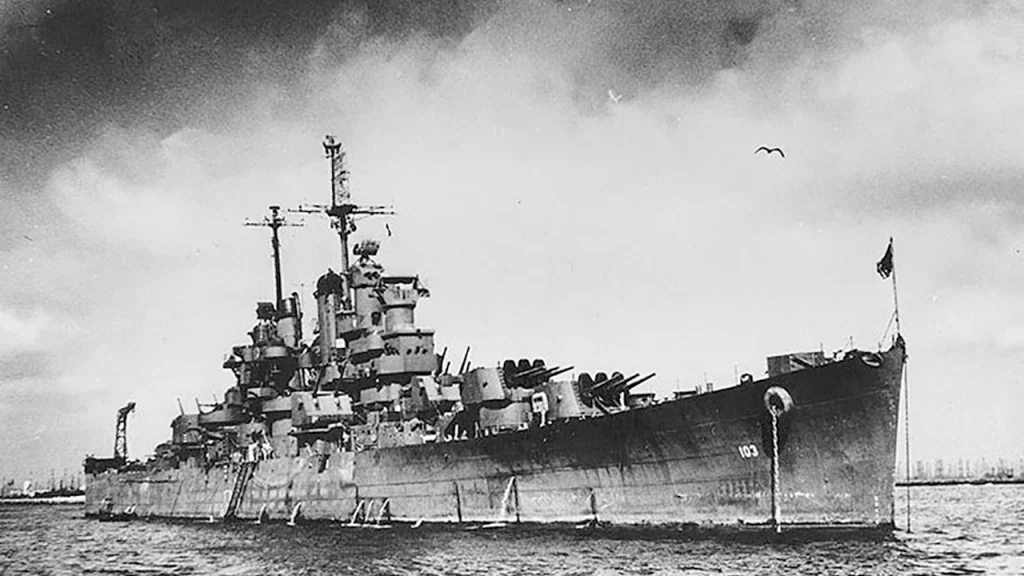
What Historical Features Can Still Be Identified on The USS Wilkes-Barre Wreck
Weaponry
- Gun turrets: The ship’s main armament of 6-inch guns can still be seen.
- Anti-aircraft gun stations: Remnants of the ship’s secondary armament are visible.
Military Equipment
- Radar monitors: Parts of the ship’s radar systems are still identifiable.
- Gun emplacements: Various gun positions can be observed throughout the wreck.
Ship Structure
- Hangar: In the stern section, divers can enter and explore the ship’s hangar.
- Multiple rooms: Several rooms in the superstructure are accessible to divers.
- Decks: Various deck levels can be explored.
- Portholes: Some portholes still have intact glass.
Unique Features
- Split configuration: The ship is divided into two separate sections due to underwater explosives testing, creating distinct bow and stern dive sites.
- Upright stern: The stern section rests in an upright position.
- Tilted bow: The bow section lies on its starboard side.
What Safety Measures Are in Place for Divers Visiting the USS Wilkes-Barre
Dive Certification and Experience
- Only highly skilled and experienced technical divers should attempt this dive.
- The wreck is not suitable for recreational divers due to its extreme depth.
- Divers must be certified in decompression diving techniques.
Depth Considerations
- The wreck lies at depths ranging from 140 to 320 feet (43 to 98 meters).
- Divers must be prepared for the challenges associated with deep diving, including:
- Extended decompression times
- Increased risk of nitrogen narcosis
- Limited bottom time
Equipment Requirements
- Technical diving gear is essential, including:
- Mixed gas breathing systems
- Multiple tanks or rebreathers
- Redundant life support systems
- Proper lighting is crucial due to the darkness at these depths.
Dive Planning
- Careful dive planning is necessary, including:
- Detailed decompression schedules
- Gas management calculations
- Emergency contingency plans
Environmental Factors
- Divers may encounter strong currents in the area.
- Visibility can vary, potentially affecting navigation and safety.
Dive Supervision
- It’s recommended to dive with experienced guides familiar with the wreck.
- Proper surface support and safety boats should be in place.
Site-Specific Hazards
- The wreck’s nickname “the Lethal Lady” underscores its dangerous nature.
- Divers must be aware of potential entanglement hazards within the wreck.
Limited Accessibility
- Due to the extreme depth and technical nature of the dive, access to this site is naturally limited to those with appropriate training and experience.
Dive Shops That Provide Diving Trips to This Shipwreck
- Key West Dive Center: While not explicitly stated that they offer trips to the USS Wilkes-Barre, they are mentioned as the “#1 Scuba Diving Tour and Activity Concierge in Key West”. They might be able to arrange or recommend technical diving trips to this wreck.
- Local technical diving operators: Given the extreme depth and technical nature of this dive, only specialized technical diving operators in the Florida Keys area are likely to offer trips to this site. These would need to be sought out specifically.
- Custom charters: Due to the advanced nature of this dive, it’s probable that trips to the USS Wilkes-Barre are primarily arranged through custom charters rather than regular scheduled trips.

